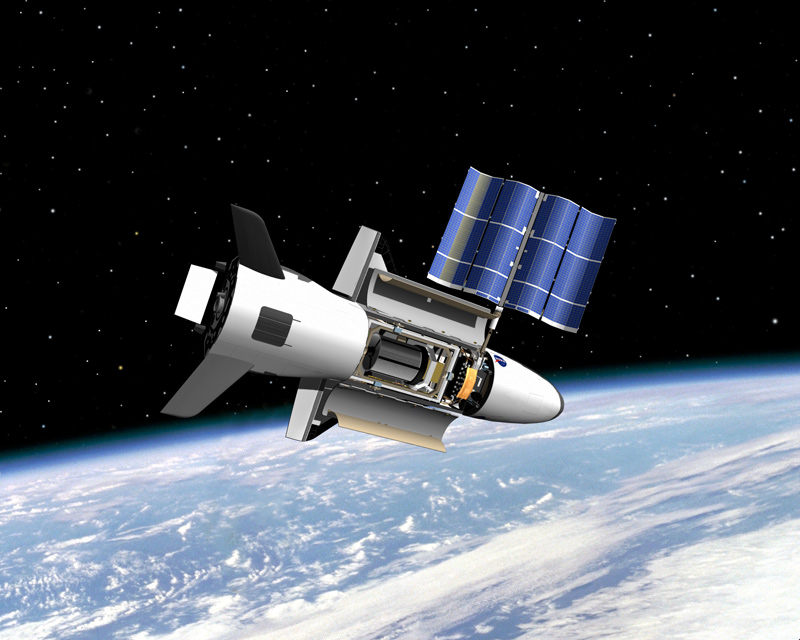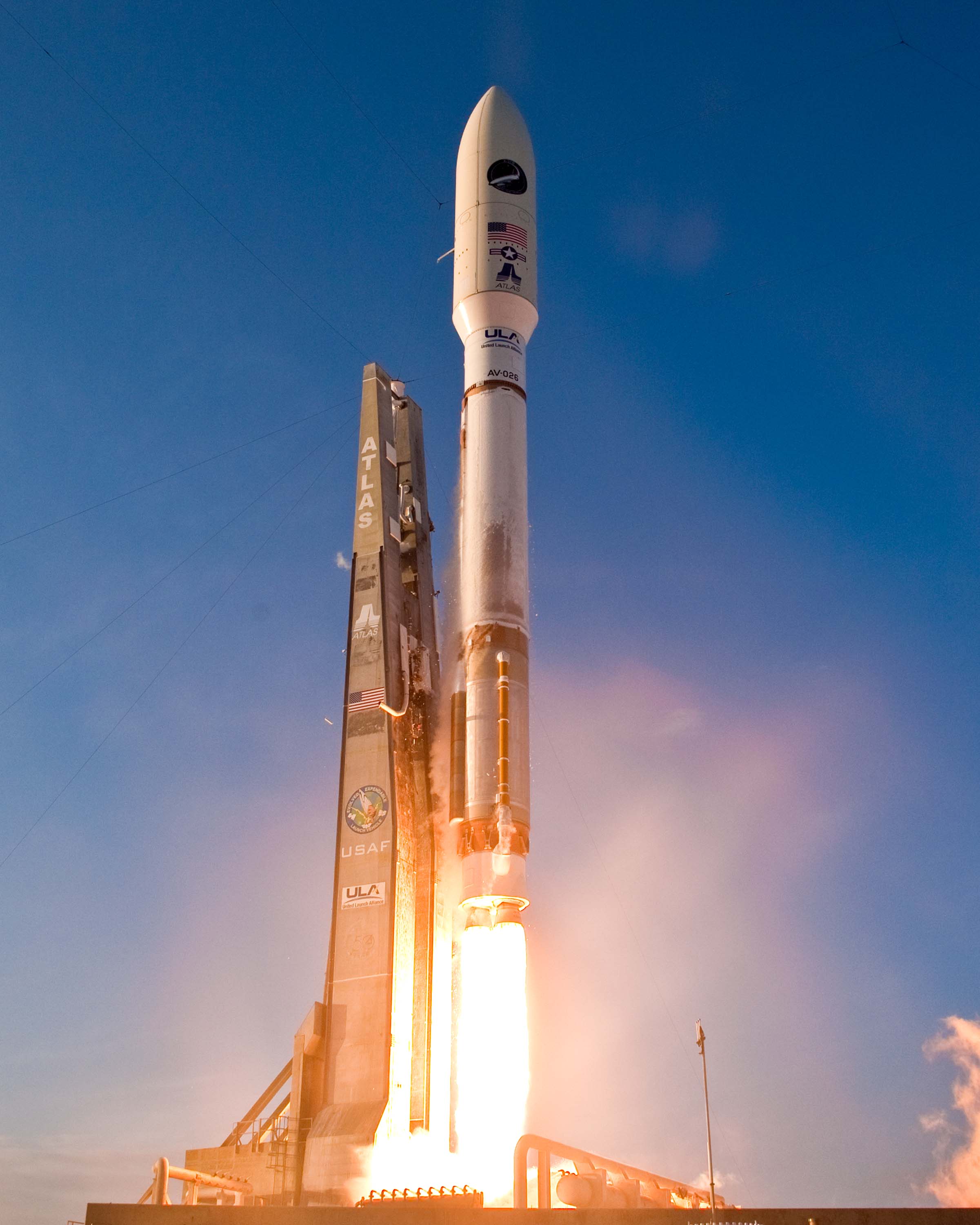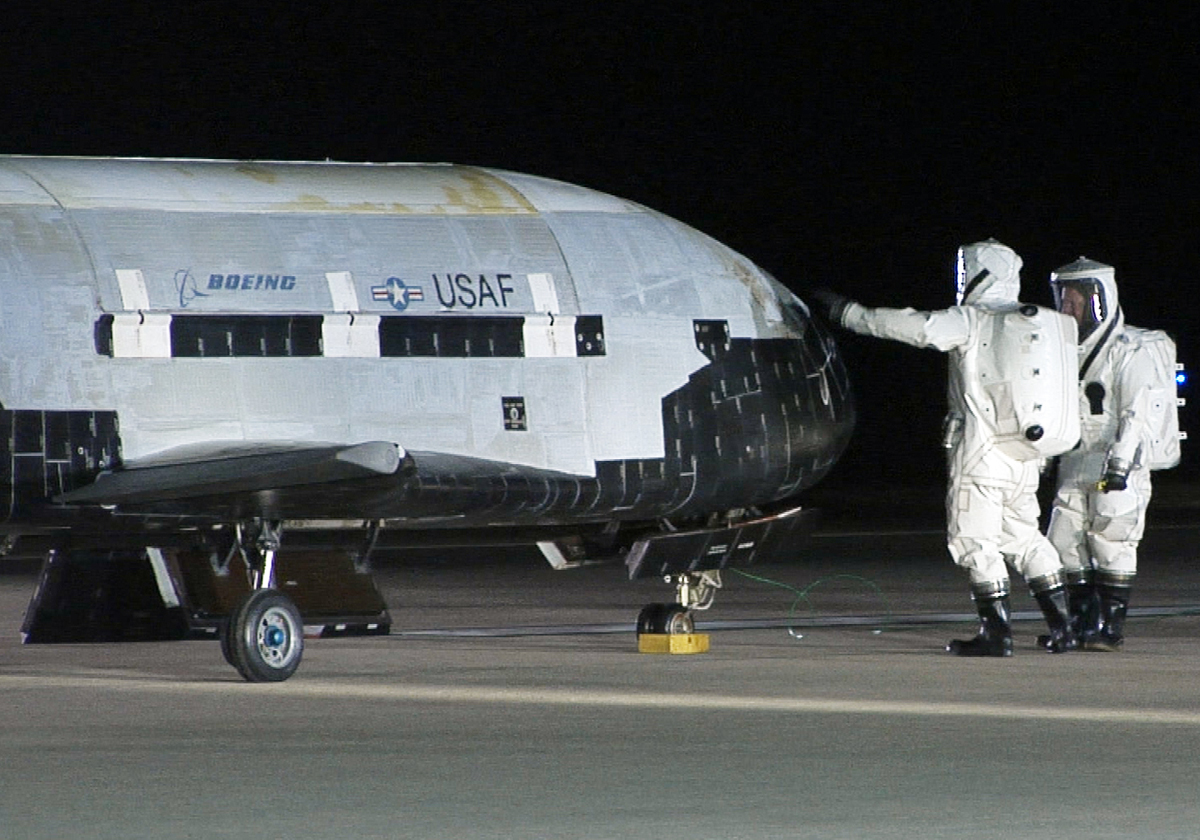US Air Force's Secretive X-37B Space Plane Shatters Orbital Endurance Record


The U.S. Air Force's robotic X-37B space plane has broken its own all-time endurance record in orbit after more than 470 days of circling the Earth on a mystery mission for the American military.
The X-37B space plane currently in orbit in flying the Orbital Test Vehicle 3 (OTV-3) mission, the third long-duration flight of the unmanned Air Force spaceflight program. The miniature space shuttle launched on Dec. 11, 2012 and is surpassed the record for longest X-37B spaceflight on Wednesday (March 26).
Until now, the record for the longest X-37B mission is 469 days, set by the program's OTV-2 mission that was launched in 2011. [See photos from the X-37B's OTV-3 mystery flight]
The OTV-3 mission in orbit today now uses the first of the Air Force's two X-37B space plane vehicles. The same spacecraft was used to fly the first-ever X-37B mission (the 225-day OTV-1 flight in 2010), while a second vehicle flew the longer OTV-2 mission a year later.
The U.S. military's X-37B space planes launch into orbit atop an unmanned Atlas 5 rocket from a pad at the Cape Canaveral Air Force Station in Florida. During launch, the space planes are encapsulated inside a protective shroud.
At the end of their respective flights, both the OTV-1 and OTV-2 craft missions flew themselves back to Earth on autopilot, each time touching down on a tarmac at California's Vandenberg Air Force Base.
X-37B space plane's Florida landing
Breaking space news, the latest updates on rocket launches, skywatching events and more!
Earlier this year, the X-37B supplier Boeing Space & Intelligence Systems announced plans to study the possibility of using NASA's Kennedy Space Center (KSC) in Florida as a landing site for future space plane missions.
Boeing officials said that investments will be made to convert a former space shuttle hangar, called the Orbiter Processing Facility (OPF-1), into a structure that would enable the U.S. Air Force "to efficiently land, recover, refurbish, and re-launch" the X-37B Orbital Test Vehicle.
Construction work at KSC for consolidating the prepping, takeoff and landings of X-37B spacecraft would be completed by the second quarter of 2015, said Boeing spokeswoman Diana Ball.
The X-37B space plane is about one-fourth the size of full-size NASA space shuttle, but relies upon the same type of lifting-body design. It is solar powered, weighs 11,000 lbs. (4,990 kilograms) and has a small payload bay about the size of the bed of a pickup truck.
Each X-37B spacecraft measures about 29 feet (8.8 meters) long and nearly 15 feet (4.5 m) wide and has a payload bay that measures 7 feet (2.1 meters) long and 4 feet (1.2 meters) wide. The space plane can operate in orbits of between 110 miles (177 kilometers) to 500 miles (805 km) above the Earth.
Clandestine missions in space
While some basic details about the Air Force's X-37B space plane program are clear (the project originally began as NASA program before shifting over the military) the nature of the payloads the space planes carried into space during each of its three missions remains a mystery.
The space plane's hush-hush missions are carried out under the auspices of the Air Force Rapid Capabilities Office.
Mission control for OTV flights are handled by the 3rd Space Experimentation Squadron at Schriever Air Force Base in Colorado. This unit is billed as the Air Force Space Command' premier organization for space-based demonstrations, pathfinders and experiment testing, gathering information on objects high above Earth and carrying out other intelligence-gathering duties.
Pushing the envelope
A global network of skywatchers has been keeping an alert eye on the space plane’s whereabouts during the current mission and the earlier flights. [See amateur video of the X-37B space plane from March 4]
OTV-3 has been in its present 43.5 degree, nearly 250 mile (400 km) orbit for more than a year, maintained against atmospheric drag by frequent small maneuvers, Ted Molczan of Toronto, a leader in the worldwide community of satellite trackers, told SPACE.com.
"This mission is all about 'pushing the envelope' … seeing what the X-37 can do," said Joan Johnson-Freese, professor of national security affairs at the Naval War College in Newport, R.I.
"The X-37 is a technology test bed and as such pushing the envelope is the mission," Johnson-Freese told SPACE.com.
"Endurance is one of several X-37 profile parameters that are being tested, along with others, such as in-flight capabilities and turnaround time for use," Johnson-Freese said.
Leonard David has been reporting on the space industry for more than five decades. He is former director of research for the National Commission on Space and is co-author of Buzz Aldrin's new book "Mission to Mars – My Vision for Space Exploration" published by National Geographic. Follow us @Spacedotcom, Facebook and Google+. Original article on Space.com.

Leonard David is an award-winning space journalist who has been reporting on space activities for more than 50 years. Currently writing as Space.com's Space Insider Columnist among his other projects, Leonard has authored numerous books on space exploration, Mars missions and more, with his latest being "Moon Rush: The New Space Race" published in 2019 by National Geographic. He also wrote "Mars: Our Future on the Red Planet" released in 2016 by National Geographic. Leonard has served as a correspondent for SpaceNews, Scientific American and Aerospace America for the AIAA. He has received many awards, including the first Ordway Award for Sustained Excellence in Spaceflight History in 2015 at the AAS Wernher von Braun Memorial Symposium. You can find out Leonard's latest project at his website and on Twitter.


